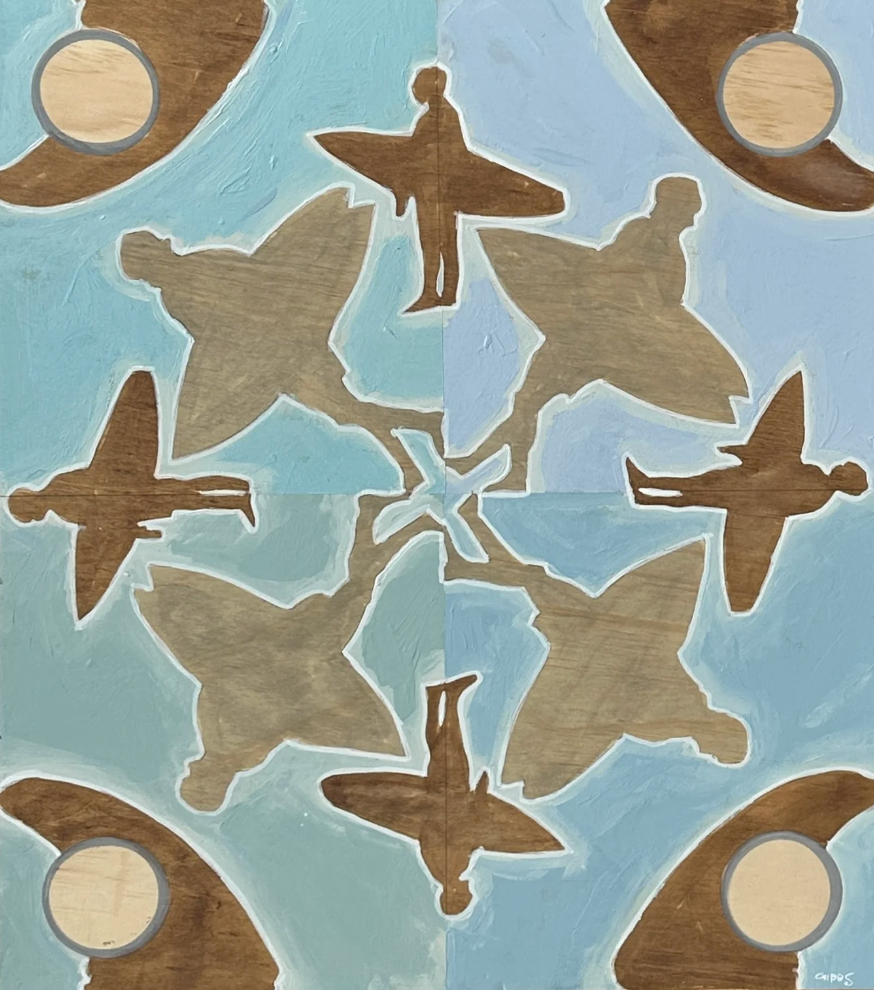
How to Choose Art for Your Home
Share
Decorating a home is about more than filling empty walls - it’s about creating an atmosphere that reflects who you are. Art plays a powerful role in shaping that environment. Whether you’re drawn to bold abstract works, peaceful landscapes, or storytelling pieces filled with symbolism, the right artwork can transform a house into a home. But choosing art for your space isn’t always easy. With so many options, where do you start? Here are some tips to help you select art that feels personal, meaningful, and lasting.
Consider the Mood You Want to Create
Every room has its own energy, and artwork has the power to enhance or even shift that mood. Ask yourself: What do you want this space to feel like?
-
Living Room: A welcoming space often calls for conversation starters—bold colors, large canvases, or artwork that reflects your personality.
-
Bedroom: Softer, calming tones or nature-inspired works can encourage rest and relaxation.
-
Office or Studio: Pieces that energize you or spark creativity, such as abstract art or vibrant colors, can help set the tone for productivity.
Think of art as an emotional anchor. When you walk into a room, how do you want to feel? Choose artwork that helps create that feeling.
Size and Scale Matter
One of the most common mistakes in choosing art is overlooking scale. A small print on a large wall can feel lost, while an oversized piece in a narrow hallway may overwhelm the space. As a general rule, artwork should take up about two-thirds to three-quarters of the wall space above furniture.
For instance:
-
A large painting above a sofa or bed can create a dramatic focal point.
-
Smaller works grouped together in a gallery wall can add personality and dimension.
-
Tall, vertical pieces can draw the eye upward in rooms with high ceilings, while wide, horizontal pieces can make a space feel expansive.
Measure your wall space and imagine how the piece will live there before you make your choice.
Choose Art That Resonates With You
Perhaps the most important factor is connection. Art should be more than decoration - it should mean something to you. Don’t worry about whether a piece matches your couch or if it follows the latest design trend. Instead, ask:
-
Does this piece make me feel something?
-
Does it remind me of a place, memory, or part of my story?
-
Could I see myself enjoying this artwork years from now?
When you choose art based on personal resonance, you create a home filled with meaning rather than just stylish décor.
Think About Color, but Don’t Limit Yourself
It’s common to think artwork must match your color scheme. While complementary colors can help tie a room together, don’t be afraid to let art stand out. Sometimes a contrasting piece can bring energy to a neutral space or become the highlight of the room.
For example, if your walls and furniture are in muted tones, a vibrant painting can create a striking focal point. On the other hand, if your décor is already bold, a subtler artwork may provide balance. Let color guide you, but don’t let it box you in.
Invest in Original Work
In today’s world, it’s easy to buy mass-produced prints from big-box stores. While there’s nothing wrong with affordable décor, investing in original art brings a different level of richness to your home. Original works often have textures, depth, and stories that reproductions can’t capture. Plus, you’re directly supporting artists and helping keep creative culture alive.
When you buy original art, you’re not just purchasing décor, you’re inviting a piece of someone’s vision and story into your home.
Let the Sea Show Me - Original painting by Nathan Gibbs
Start Small and Build Over Time
Creating an art collection doesn’t have to happen all at once. Begin with one or two meaningful pieces and grow from there. Over time, your collection will naturally reflect your journey, tastes, and experiences. Mixing mediums - paintings, prints, sculptures, and textiles - can add variety and interest.
Remember, your home is a living space. Just as you evolve, so will your art collection.
Final Thoughts
Choosing art for your home is a deeply personal process. It’s not about following rules or impressing others; it’s about surrounding yourself with works that inspire, comfort, and reflect who you are. Start with the mood you want to create, pay attention to scale, and most importantly, choose pieces that resonate with you.
When you invest in original art, you’re not only enhancing your home - you’re also building a connection with creativity, culture, and story. Over time, your home becomes more than a place to live. It becomes a gallery of your life.

